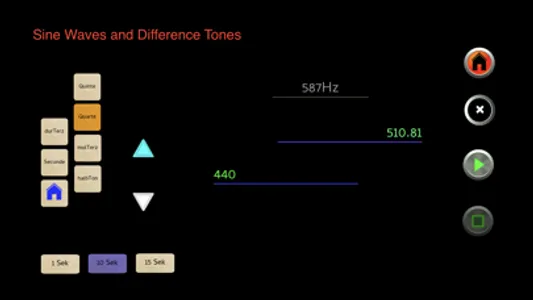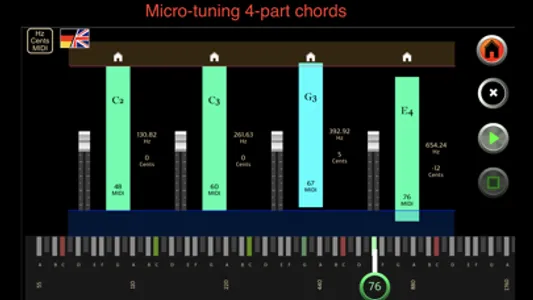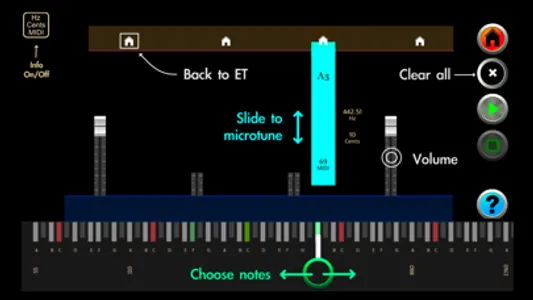Written for students of the Musikhochschule (Conservatoire) Department of the University of Münster, this app demonstrates difference tones and pure intervals, as well as providing a hands-on experimental environment to improve ear-training for real chamber music / choir / orchestra situations.
Training in pure intervals is interesting in itself, and useful for tuning harpsichords, but the real issues arise when 4 players or voices might all make adjustments to the tuning of a chord, with exceedingly diverse results! How does a 'pure' major chord sound? Can you hear the difference if the major third is a little sharper than pure, or in equal temperament? Does it matter where in the chord (which inversion) a micro-tuned note lies? How far up can the fifth go before it sounds too high? What effect does a high leading tone have? Is a 'too sharp' major 3rd in a dominant chord acceptable when it is about to be resolved? Can a chamber musician help the tuning of the chord when playing the 5th, without criticising whoever is playing the 3rd!? Does microtuning have an effect on the 'character' of the chord?
If these questions interest you whatsoever, then this is the app for you!
(pure major chord: 5th roughly 2 cents sharp, 3rd anywhere up to 12 cents flatter than equal temperament, see Help screens for more!)
Training in pure intervals is interesting in itself, and useful for tuning harpsichords, but the real issues arise when 4 players or voices might all make adjustments to the tuning of a chord, with exceedingly diverse results! How does a 'pure' major chord sound? Can you hear the difference if the major third is a little sharper than pure, or in equal temperament? Does it matter where in the chord (which inversion) a micro-tuned note lies? How far up can the fifth go before it sounds too high? What effect does a high leading tone have? Is a 'too sharp' major 3rd in a dominant chord acceptable when it is about to be resolved? Can a chamber musician help the tuning of the chord when playing the 5th, without criticising whoever is playing the 3rd!? Does microtuning have an effect on the 'character' of the chord?
If these questions interest you whatsoever, then this is the app for you!
(pure major chord: 5th roughly 2 cents sharp, 3rd anywhere up to 12 cents flatter than equal temperament, see Help screens for more!)
Show More






